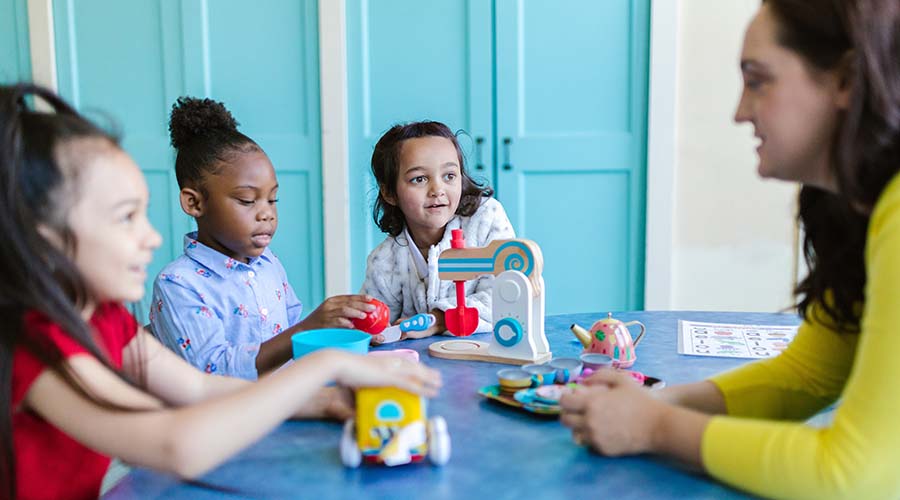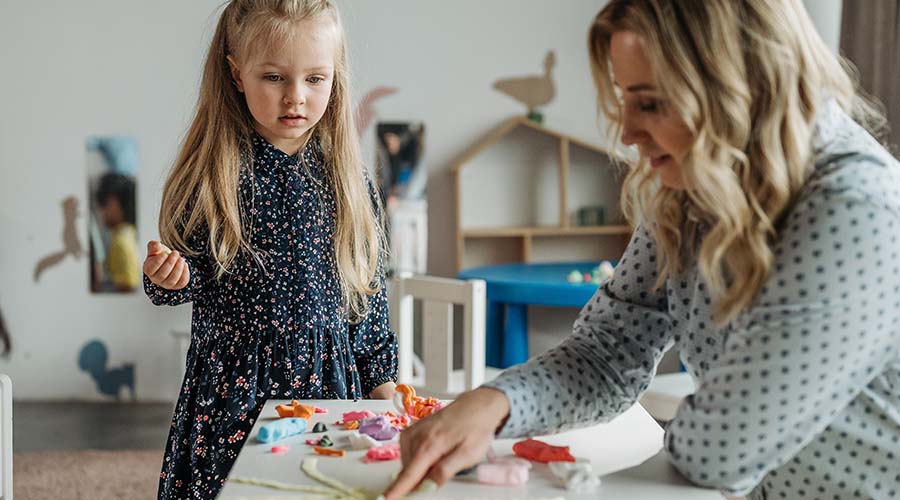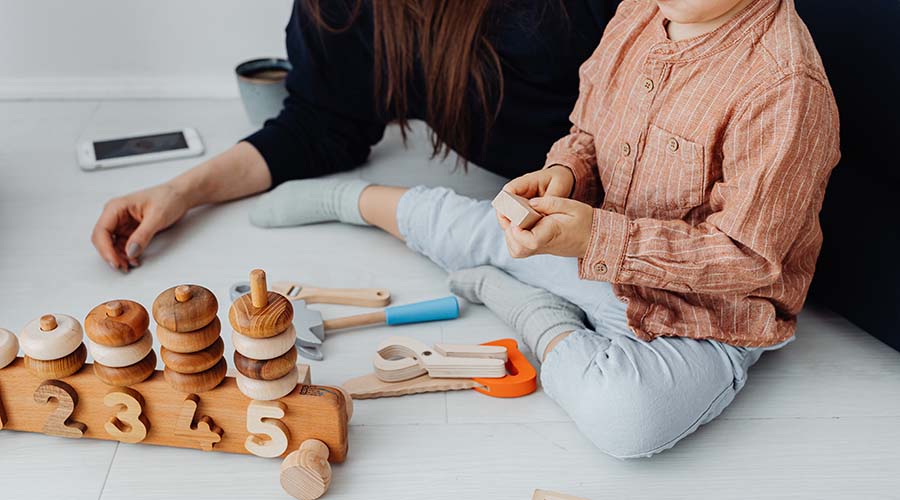settings
children
With Famly since
The assessment process in early childhood education can quickly get complex. Between the ages of birth through eight years old, their rates of physical, motor and linguistic development greatly outpace growth rates of later stages in life.
Child development is rapid, always ongoing, highly influenced by environmental factors and supports, and a deeply individual process.
As an early years educator, you see the importance of this in action every day. But how do you record all that growth? And how do you know what to look for? That’s what makes early years observations challenging.
In this article, we’ll look at what makes for a meaningful assessment in early childhood, and how you can put that into practice in your daily work in early childhood education.
What's the point of assessing children's development?
Just like each child has a unique personality, so do they have their own unique path to growth. This path is something that the child determines — but as an educator, you can use observations to help understand and support that path.
It’s not about adhering to a standardised list of “normal” development points and checking off the boxes. Rather, it’s about understanding a children's progress as individuals, and acknowledging their personal educational needs.
Depending on the early childhood program, you may feel pressured to fit children's progress into some universal framework, as though every young children learns and grows at the same pace. But if we're assessing children with a standardized testing mindset, we're missing the big picture of growth and learning.
You can observe the children in a way that reflects where they have come from, what meaningful growth moments have happened in their life, and how best to structure their education from whatever point they may be at.

Assessing children's progress as individuals
Teaching organisations and national education groups can provide lists of general milestones and markers for various early years stages, such as this example from the Wisconsin Department of Public Instruction.
Rhese can be useful as a foundation to give you a general idea of the core principles of how children grow and what’s healthy for them. But in the daily hubbub of your early childhood classroom, it might not be beneficial to nurturing the children’s ability to learn. Understanding child development on paper is way different than observing and assessing it in action.
There are so many factors at play that determine where early years children are on the developmental spectrum, that standardised observations and assessments relying on strict guidelines aren’t the best way to assist children on an individual level.
According to the National Association for the Education of Young Children (NAEYC) appropriate early years child assessment should consist of observing, documenting and assessing each child’s development and learning. In early childhood programs, you can do this through organised programs and activities, but also through observation of children engaging in unplanned, supervised play and spontaneous conversation and interaction during group and individual activity.
These ideas and notions on observation are great on paper, but what does that literally look like in your early years setting?
Next up, we'll look at five general categories of early learning and development, as laid out in the Principles And Recommendations For Early Childhood Assessments published by the National Education Goals Panel.
As you record child development in your early childhood setting, it's worth looking for moments in children's day when you see them express growth in these five areas.
1. Physical wellbeing and motor development
As an infant, there are a slew of physical milestones we all look for such as grabbing, sitting up and crawling. This development can be fairly obvious in the classroom as you're just watching for what the children physically do. As early educators, we can assess their progress by providing a variety of materials and toys that emphasize gross motor development, such as soft materials to throw and catch, and objects of different shapes, sizes, weights and colours. If a child isn’t physically engaging in an activity you can make note and follow up to see what they might be having trouble with.
2. Social and emotional development
In their first few years of life, children gain social and emotional skills, like regulating emotions, sharing, and following instructions.
In your early years centre you can see how the children express themselves, develop relationships with other children and learn through exploration of their environment. From there you can gauge the social and emotional development of the class. Maybe one child isn’t able to work with another or is displaying a different emotion than others in response to a lesson.

3. Children's approaches towards learning
Something many people likely don’t think about is the fact that we all had to learn how to learn, and the way we first teach children how to learn is through play.
Engaging children in games and activities helps establish curiosity about the world, initiative and problem solving, and focused attention and persistence. In the classroom you can observe who isn’t picking up on the lessons as quickly or learning a new skill in the same way as others. Perhaps they need a little extra time or it explained in a different way. Remember just because a child isn’t learning something in the same way, it doesn’t mean they don’t have the capacity to learn it.
4. Language development
If a child doesn’t have appropriate communication skills for their age, it’s going to be that much more difficult to make a reliable assessment of their other abilities.
Engaging children in conversation, story time and verbal activities promotes language development, and especially with group activities, makes it more apparent who isn’t communicating in the same way or on the same level.
5. Cognition and general knowledge
Cognition and general knowledge is about children learning to understand the world and focuses on intellectual development through discovery and problem solving. This is where mathematical thinking, scientific thinking, and rationale come into play.
Children learn by making connections between new information presented to them and what they already know. In the classroom, if a child doesn’t understand a reaction to a certain action or activity try circling back around and explaining it again, or ask them more questions about it. See if they can come to the conclusion on their own with a little time and a push in the right direction.

Using assessments to support young children's learning
If all this sounds like a lot of work, it certainly is, but it’s nothing to stress out about and should be approached as a long-term game.
As an educator in early learning, you aren’t expected to have all the answers from the get go. The act of observing, documenting and assessing children's development should be a continuous practice. It should be ongoing, strategic, reflective and purposeful, and as educators you should use assessment related activities in daily routines and curriculum in order to make as authentic an assessment as possible over an extended period of time.
A child’s learning process is always developing, so your assessments should be too. And the beauty of small, recurring assessments is that mistakes are very low-stakes. For example, if you assess that a child should be reading at a certain level and assign them a book that is too easy, you can simply give them something more advanced. It's okay to adjust your assessment methods over time, as you build your own skills and get to understand each particular child.
While all the assessment is important for the children’s education, it is also integral in shaping the educator’s lesson planning. With assessments, both on an individual level and in a group setting, you can evaluate your programs and determine what is working for some and not working for others.
The big ideas
Try learning journals for free
Add observations, and build digital learning journals to share with families instantly. All with your completely free 14-day trial.
Get started









